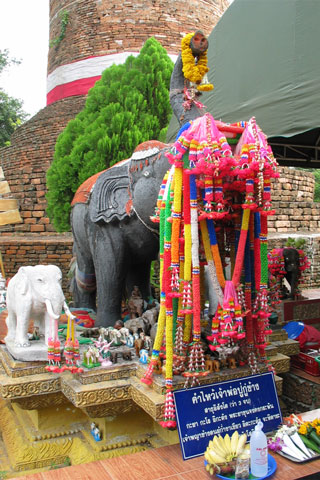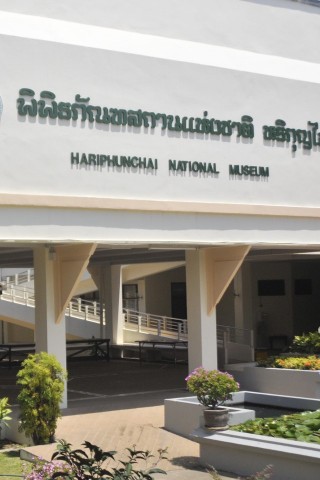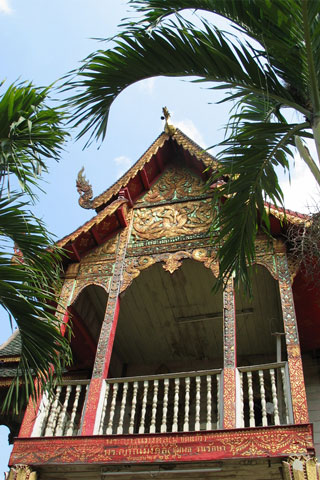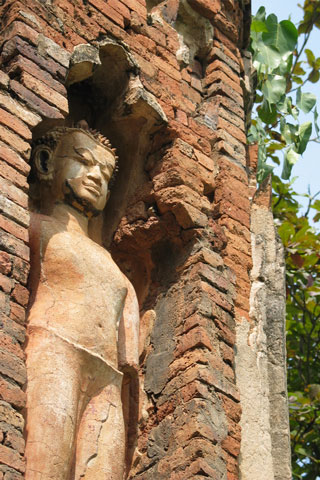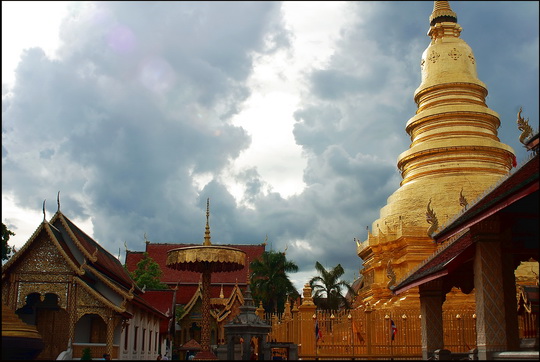Ku Chang Ku Ma
The front one is Ku Chang which marks the burial site of Queen Chama Thewi’s war elephant called Phu Kam Ngu Khiaw which means dark skinned elephant that is mighty at war. it is a very popular shrine with daily visitors leaving loads of garlands and other devotional items. The latter stupa marks the burial […]
Hariphunchai National Museum
Reflecting more Lamphun’s historical significance than the town’s current size and influence, it’s rather good as far as provincial museums go. The display is split into three sections, with a ground floor room housing stone (mostly Mon) inscriptions, a first floor section with Buddhas and statues from local wats and a separate building concentrating more […]
Wat Mahawan
The Phra Sila Dam is believed to have been brought to Lamphun by Queen Chama Thewi and it has been used as a base for a popular line of votive tablets. You can see the image seated under the umbrella, just to the left of the wooden building within the compound. Wat Mahawan is just […]
Wat Chama Thewi (Wat Kukut)
It’s said that one of the weathered yet striking Mon-style chedis adorned with standing Buddha images contains the ashes of the great queen herself, and the chedis found here are considered the best examples of Dvaravati-period architecture in Lamphun. History buffs will further appreciate the murals in the main viharn building that depict scenes from […]
Wat Phra That Haripunchai
This is the number one destination in Lamphun for local tourists and is indeed one of the most venerated sites in northern Thailand. As we mentioned in the introduction, Haripunchai is the name of the old Mon city on the site of modern Lamphun and the main stupa — bit of a ringer for […]

